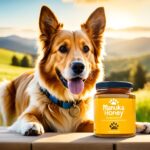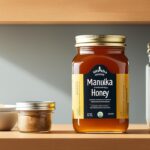When it comes to the shelf in your pantry, both Manuka and regular honey gleam with a promise of sweetness, but are they truly equal? The buzz around the unique properties of Manuka honey is impossible to ignore, but how does it really compare to the jars of regular honey we’ve known and loved for years? In this exploration of golden nectars, we delve into the heart of the hive to unearth the benefits of different honey types and answer the lingering question on every health enthusiast’s lips: What makes Manuka the monarch of the honey world?
Join us as we embark on a flavorful journey, sieving through the subtleties that contribute to the comparison of Manuka honey and regular honey. It’s more than taste and texture; we’re talking medicinal marvels, rarity, and even the landscapes of New Zealand. Uncover why these sweet delights are not created equal and how their differences could impact your choice at the checkout.
Understanding Manuka Honey and Its Unique Origin
When it comes to origin of Manuka honey, few products can boast such a unique and localized source as that produced from the nectar of the Leptospermum scoparium, better known as the Manuka bush. Native to New Zealand, these bushes provide the exclusive environment needed for the creation of New Zealand Manuka honey. This honey is much more than just a sweetener; it’s a product of a specific terroir, a term most often used in winemaking to denote the natural environment in which a particular product is produced.
The limited distribution of the Manuka bush plays a critical role in the distinctive qualities of the honey. The Manuka bush thrives in wild, untamed areas across New Zealand and southeastern Australia, but not all of these bushes are equal in terms of the potency of their nectar. The Manuka honey derived from New Zealand is often considered the benchmark for high-quality Manuka honey due to the presence of certain compounds that are either less common or absent in Australian varieties.
The unique production process also sets it apart from other honeys. Bees that pollinate the Leptospermum scoparium are responsible for the advent of Manuka honey’s journey from flower to jar. The process from harvest to packaging is meticulously monitored to ensure purity and quality, preserving its signature characteristics.
- Exclusive origin: Native to New Zealand’s unpolluted and remote wilderness
- Limited distribution: Only specific regions support the growth of Leptospermum scoparium
- Unique production: Beekeeping practices dedicated to preserving the natural properties of Manuka honey
The rarity of the Manuka bush and the intricate steps taken during the honey-making process contribute to both the rarity and the medicinal properties of this liquid gold. Bearing testament to its origin, each jar is not just a spread for your toast but a spoonful of one of nature’s rarities, nurtured by the indigenous flora and fauna of New Zealand.
Adding to its singularity, Manuka honey’s qualities are not just reliant on the post-harvest process. It is also defined by the very soil, climate, and seasons that foster the growth of the Manuka bush, making it clear why this type of honey is so prized among connoisseurs and health enthusiasts alike.
Regular Honey: A Varied Landscape of Sources and Flavors
Regular honey, unlike single-source varietals, paints a broad canvas across the palates of those who savor its sweetness. Its essence is shaped by the infinite varieties of flowers and geographic locales, from the vast clover fields to the mixed bouquets of wildflower patches. Each source of regular honey bestows a distinct array of flavor profiles, often reflecting the unique characteristics of their respective environments.
The classic clover honey, light and mild in taste, is a ubiquitous favorite often noted for its pleasing floral notes and versatility. On the other hand, wildflower honey is akin to a mosaic, a complex compilation of nectar from the diverse flora within reach of the industrious bees. The result is a flavor that can vary from batch to batch, with an unpredictable but delightful complexity that can be rich, robust, or subtly sweet.
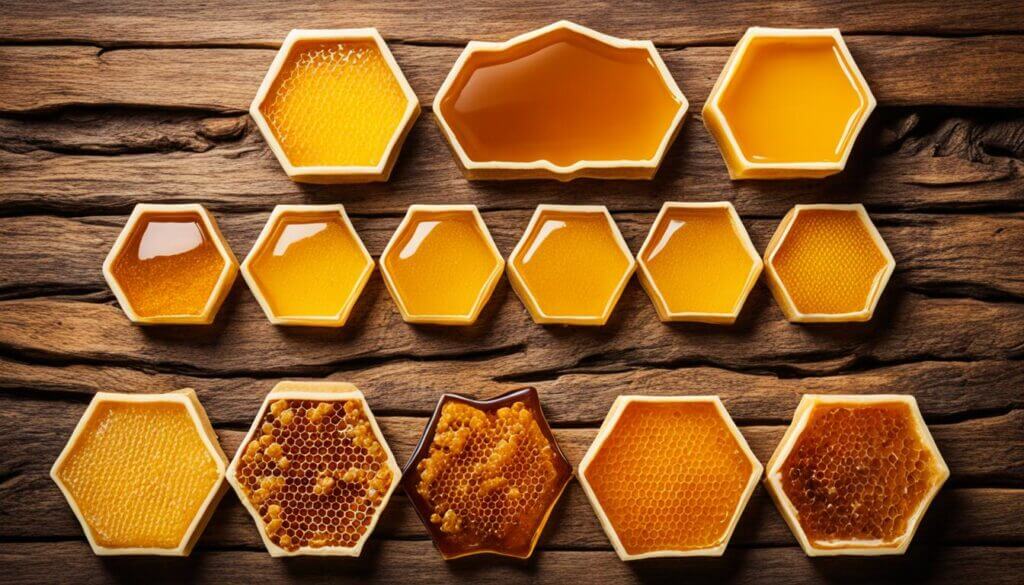
To further explore the abundant varieties available, consider the following comparative table outlining some traditional sources and their characterized flavor nuances. This guide serves as a testament to the nuanced experiences regular honey can offer to both the culinary enthusiast and the casual consumer alike.
| Source of Honey | Color | Taste Profile |
|---|---|---|
| Clover Honey | Light Amber | Sweet, Floral, Mild |
| Wildflower Honey | Varies | Rich, Complex, Varied |
| Orange Blossom Honey | Light to Dark Amber | Fruity, Citrusy, Bright |
| Alfalfa Honey | Light | Mild, Spicy, Delicate |
| Buckwheat Honey | Dark Amber | Strong, Molasses-like, Earthy |
Whether stirred into a warm cup of tea or drizzled over a hearty oatmeal, the flavors of regular honey enrich our lives with a natural sweetness born from the earth’s bountiful gardens. As we sample these varieties, we partake in a culinary journey through the fields and flowers that are the source of this golden elixir.
Composition and Nutritional Profile: A Scientific Breakdown
When it comes to understanding the health benefits of honey, a closer look at the honey nutritional content and the presence of antioxidants in honey is essential. A comparison between Manuka honey and regular honey reveals distinct attributes that contribute to their nutritional value and overall health benefits. Below, we’ve broken down the key components that set these two types of honey apart scientifically.
Scientists attribute a range of health benefits to honey, largely as a result of its intricate composition which includes water, sugars, vitamins, minerals, enzymes, amino acids, and a rich variety of antioxidants such as flavonoids and phenolic acids. These antioxidant compounds are known for their role in reducing oxidative stress in the body and combating inflammation. Manuka honey, in particular, contains unique antioxidant compounds like methylglyoxal, which contribute to its renowned antibacterial properties.
- Calorie Content: Both Manuka and regular honey contain similar calorie counts, with approximately 64 calories per tablespoon, making them a potent energy source.
- Vitamins and Minerals: Honey is a source of vitamins such as B6, thiamine, niacin, riboflavin, pantothenic acid, and certain amino acids. Minerals present include calcium, copper, iron, magnesium, manganese, phosphorus, potassium, sodium, and zinc.
- Antioxidants: Manuka and regular honeys both contain health-boosting antioxidants, though studies suggest that Manuka honey may have higher antioxidant activity due to its unique compounds.
In summary, the health benefits of honey reach far beyond its sweet taste. Its nutritional content, imbued with essential vitamins, minerals, and antioxidants, can play a role in a balanced diet and contribute to overall well-being. While both types of honey boast impressive profiles, Manuka honey stands out for its superior antioxidant properties, which is worth considering when choosing a honey product for both its flavor and health advantages.
Manuka Honey vs Honey: Evaluating the Taste Experience
The extraordinary taste of Manuka honey sets it apart from regular honey varietals. Manuka’s unique flavor profile is cherished by connoisseurs and casual enthusiasts alike, influencing its growing popularity. Its rich, earthy tones with hints of herb and minerality are often contrasted against the milder, frequently sweeter nuances found in conventional honeys such as clover or orange blossom. The taste of Manuka honey not only offers a distinct gastronomic adventure but also reflects its natural source—the pristine forests of New Zealand and parts of Australia where the native Manuka bush thrives.
When we look deeper into flavor comparison, honey tasting notes can vary widely based on numerous factors including the age of the honey, the specific processing methods employed, and the conditions under which it is stored. These elements can dramatically influence the final product that graces our palates. Below is a comparative table highlighting the different taste characteristics of Manuka honey versus other popular honey types.
| Honey Type | Flavor Notes | Texture | Color |
|---|---|---|---|
| Manuka Honey | Complex, earthy, and rich with caramel-like sweetness | Creamy and thick | Dark brown |
| Clover Honey | Mild, delicately floral with a sweet finish | Smooth and light | Light amber |
| Wildflower Honey | Varies with floral sources, potentially fruity or tangy | Diverse | Varies from light to dark amber |
| Orange Blossom Honey | Bright and citrusy with a slightly zesty quality | Relatively smooth | Light to medium amber |
Understanding these complexities in flavors is key to appreciating each honey’s uniqueness. Whether you desire the bold, medicinal-infused taste of Manuka honey or the gentle whisper of a mild clover honey, being versed in their distinct tasting notes will enhance your honey tasting experiences. Remember that the best way to truly appreciate honey is by tasting them yourself, noting the various sensations and characters that dance across your tongue.

Medical Grade Manuka Honey: Understanding Its Healing Properties
The therapeutic uses of honey have been documented through ages, but Manuka honey stands out due to its remarkable antibacterial properties. Sourced from New Zealand’s Manuka bushes, medical grade Manuka honey has been making headlines not just as a superfood, but as a potent healing agent in the medical community. This specialized honey is well-regarded for its efficacy in aiding the healing process, particularly when dealing with wounds and skin infections.
- Medical grade honey is rigorously tested to guarantee its purity and potency, often earning the distinction as medical grade for its enhanced antibacterial effects.
- Its antibacterial properties are attributed to the presence of methyglyoxal (MGO), a compound that endows Manuka honey with its powerful infection-fighting capabilities.
- Many studies have illustrated that, when applied topically, Manuka honey can support wound healing, reduce infection risk, and provide a moisture-barrier—all creditable to its high-grade antibacterial constituents.
Let’s delve into the specific applications and benefits that medical grade Manuka honey offers in the therapeutic landscape:
| Therapeutic Use | Benefits of Medical Grade Manuka Honey |
|---|---|
| Wound Care | Accelerates healing, reduces infection, and promotes tissue regeneration. |
| Skin Conditions | Alleviates symptoms of eczema and psoriasis, has anti-inflammatory effects. |
| Digestive Health | May help alleviate symptoms of digestive disorders including H. pylori infections. |
| Oral Hygiene | Inhibits harmful oral bacteria, reducing dental plaque and gingivitis. |
| Sore Throats and Immunity | Offers relief for sore throats and may boost immune function with its antimicrobial properties. |
Medical grade Manuka honey’s substantial therapeutic potential is undeniable, and ongoing research continues to explore new areas where it can be beneficial. For now, it’s clear that this honey is more than just a sweet treat—it’s a powerful tool in the quest for natural health remedies.
Manuka Honey’s Unique Non-Peroxide Activity (NPA)
When it comes to Manuka honey, its defining characteristic is unquestionably its non-peroxide activity (NPA). Unlike other types of honey, Manuka honey contains powerful antibacterial properties that are not derived from hydrogen peroxide. In this context, NPA is used as both a measure and indication of this honey’s unique antibacterial strength.
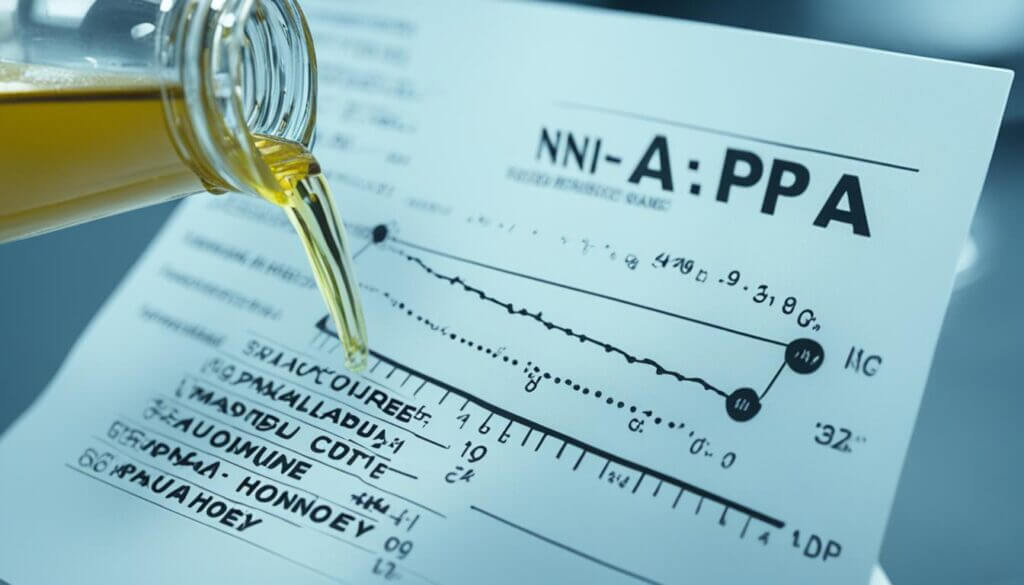
The methylglyoxal (MGO) in Manuka honey is the magic ingredient responsible for its NPA. MGO is a compound found in most types of honey in small quantities, but in Manuka honey, it can be up to 100 times higher. This elevates the honey’s antibacterial properties markedly beyond those found in traditional honey, making it sought-after for both medicinal and dietary use.
The antibacterial efficacy of Manuka honey, due to its NPA, is highly regarded in natural medicine. The grading system that measures the NPA is critical for consumers; it ensures they are purchasing honey with the guaranteed levels of antibacterial activity. It is also used to determine the legitimacy and potency of the product, as genuine Manuka honey’s NPA levels are what set it apart from other honeys claiming to have similar health benefits.
How is NPA measured, and why is it important? Here’s a brief overview:
- The NPA is typically denoted on Manuka honey packaging, with numbers like 10+, 20+, 30+ used to quantify the potency. The higher the number, the stronger the antibacterial effects.
- Measurement of NPA is often equated to the Manuka honey NPA equivalent of phenol, a common antiseptic. Hence, an NPA of 20+ would have the same antibacterial strength as a 20% solution of phenol.
- Rigorous laboratory testing is required to determine the NPA levels, which should only be carried out by accredited institutions to ensure accuracy.
- This grading scale helps guard against misleading products, ensuring that consumers receive the true benefits associated with Manuka honey’s antibacterial properties.
Understanding the importance of non-peroxide activity, the role of methylglyoxal in Manuka honey, and the significance of accurate NPA measurements provide consumers with the knowledge to choose a quality product that delivers the expected health benefits.
Price Point and Accessibility: Is Manuka Worth the Cost?
When it comes to the cost of Manuka honey, consumers quickly notice a significant price difference compared to standard honey varieties. Often seen as a top-shelf product in health food stores and online marketplaces, Manuka honey commands a premium, mostly due to its unique beneficial properties, limited supply, and the meticulous process required for its production in New Zealand. The question of affordability comes to the forefront for health-conscious consumers comparing honey prices.
To provide some context on the affordability of honey types, let’s review an illustrative comparison. Regular honeys such as clover or wildflower are generally accessible, with prices reflecting their broad availability. On the other hand, Manuka honey, with its higher Unique Manuka Factor (UMF) ratings, often fetches a higher market price due to the bioactive properties it contains, like methylglyoxal (MGO).
- Regular Honey (Clover, Wildflower):
- Widely available
- Varying prices based on brand and quality
- General health benefits
- Manuka Honey:
- Limited availability due to geographic constraints
- Higher price reflective of unique properties
- Additional health benefits, including antibacterial properties
Nevertheless, many consumers consider the benefits of Manuka honey to justify the expense. Those seeking honey mainly for flavor might select a less costly alternative, while individuals prioritizing health benefits might find Manuka honey to be a worthwhile investment. Ultimately, the decision comes down to personal preference, intended use, and budgetary considerations.
In addressing the topic of consumer accessibility, it’s not merely a question of price, but also the ease of finding genuine Manuka honey. Fakes and imitations abound, so purchasers must be diligent in identifying authentic products, typically indicated by trustworthy certifications such as the UMF or MGO ratings.
As discerning consumers weigh the higher cost of Manuka honey against its acclaimed benefits, awareness and education on the product’s value can lead to more informed purchasing decisions, balancing the desire for quality with that of affordability.
Sustainability and Ethical Considerations in Honey Production
At the heart of modern apiculture lies a growing concern for the sustainable honey production and the ethical beekeeping practices that shape the industry. These topics raise important questions about the environmental impact of honey production and the long-term viability of bee populations around the world.
Sustainable practices in honey production are not just beneficial for the environment; they are essential for the continued existence of healthy bee colonies and the overall balance of our ecosystems. Ethical beekeeping entails rigorous standards for the treatment of bees, ensuring that their natural behaviors are respected and their health is prioritized.
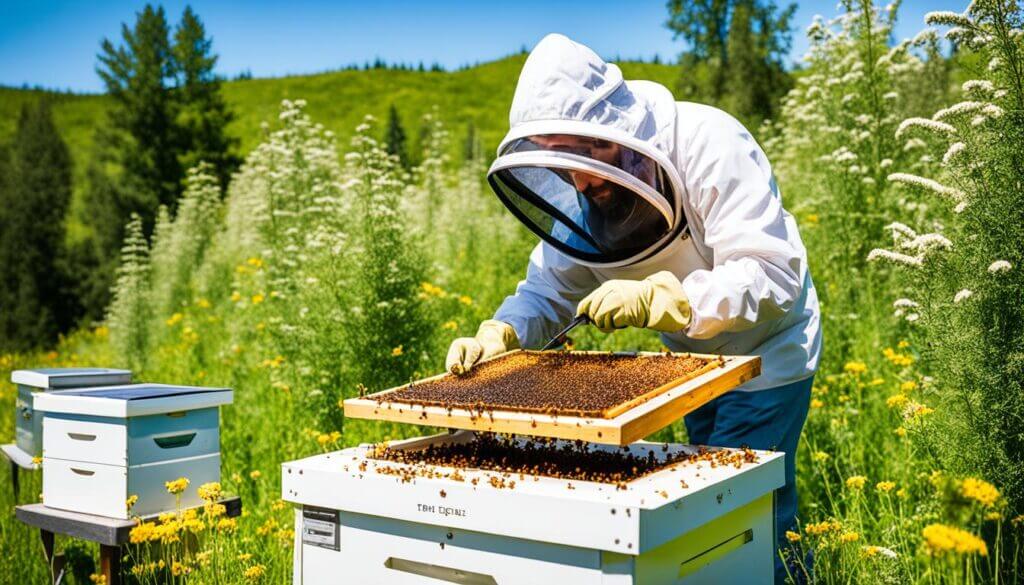
In a move to address these issues, several key initiatives have been proposed and implemented by beekeepers and honey producers:
- Adoption of organic farming practices that avoid the use of harmful pesticides and encourage the natural foraging behavior of bees.
- Implementation of habitat restoration projects designed to increase the availability of diverse pollen sources, which are critical for bee nutrition and colony strength.
- Introducing traceable honey supply chains that allow consumers to understand where their honey comes from and how it was produced.
While Manuka honey is often produced in areas that inherently practice these sustainable activities due to its natural habitat in New Zealand, the practices within global honey production can vary widely. For this reason, it is essential for consumers to be informed and for producers to be transparent about their methods.
Ultimately, by supporting honey brands that promote sustainable production and ethical beekeeping, consumers can play an active role in mitigating the environmental impact of honey and ensuring the health and survival of bee populations for generations to come.
Certification and Labeling: Ensuring the Authenticity of Your Honey
The assurance of authenticity is paramount when purchasing Manuka honey, and this is where Manuka honey certification and honey labeling standards come into play. Certifications like the Unique Manuka Factor (UMF) certification are not mere labels, but emblems of purity, quality, and authenticity. For producers, obtaining these certifications involves meeting stringent criteria, which for consumers, means peace of mind when making a purchase. Let’s examine some of the key certifications you should look for to ensure the Manuka honey you buy is genuine.
- UMF Certification: Issued by the Unique Manuka Factor Honey Association, this certification verifies the antibacterial properties of Manuka honey and guarantees its therapeutic effect.
- MGO Certification: This marker indicates the presence of methylglyoxal, one component that contributes to the honey’s unique properties.
- KFactor: A holistic approach that denotes the purity and complexity of the honey, touching on live enzymes, pollen count, and chemical residue compliance.
In the table below, we compare these chief certifications, detailing their criteria and what each one signifies for Manuka honey.
| Certification | Key Criteria | Significance |
|---|---|---|
| UMF | Non-peroxide activity, MGO content, leptosperin | Assures antibacterial potency and authenticity |
| MGO | Methylglyoxal content | Indicates specific compound responsible for medicinal properties |
| KFactor | Pollen count, purity, non-GMO, raw and unpasteurized | Reflects overall natural quality and integrity of the honey |
When choosing Manuka honey, check the label for these certifications to ensure you’re investing in a product that meets high honey labeling standards. Mislabeling and counterfeit products are not uncommon, so buying honey with clear certification helps support ethical practices and genuine craftsmanship in honey production. By informing yourself and purchasing certified Manuka honey, you not only enjoy its unique benefits but also contribute to the sustainability and integrity of the industry.
Conclusion: Making an Informed Choice Between Manuka and Regular Honey
As we’ve delved into the sweet world of honeys, we’ve uncovered the nuanced differences that set Manuka and regular honey apart. Whether it’s for its flavor profile, health perks, or sustainability practices, the choice between the two depends heavily on individual needs and values. To help crystallize your decision, consider this handy honey selection guide:
- If seeking a honey with a unique flavor and robust potency, Manuka honey stands unparalleled with its distinct earthy tones and strong taste.
- For those prioritizing health benefits, Manuka honey’s health benefits with its antibacterial properties and health-boosting factors make it a compelling option, albeit at a higher price point.
- Looking at the affordability scale, regular honey often provides a sweeter deal, literally and figuratively, with its diverse origins and accessible price.
- In navigating the impact of your purchase, sustainability and ethical beekeeping practices are crucial factors to ponder, irrespective of whether you are choosing Manuka or regular honey.
Recognizing the importance of making an educated choice, the following table summarizes the critical elements to consider when selecting the honey that best aligns with your preferences:
| Criterion | Manuka Honey | Regular Honey |
|---|---|---|
| Origin | New Zealand’s Manuka Bush | Varied floral sources worldwide |
| Flavor Profile | Strong, earthy, and distinctive | Sweet, varied depending on the floral source |
| Health Benefits | High antibacterial properties, Manuka honey health benefits for wound healing and digestion | Natural sweetener, contains antioxidants but less potent |
| Price | Premium, reflecting its unique properties | Wide range, generally more affordable |
| Sustainability | Strict regulations in production | Varies by producer; can be sustainably sourced |
In conclusion, your honey selection is more than a matter of taste, it’s a testament to your lifestyle and values. Whether you lean towards the medicinal might of Manuka honey or the simplicity of regular honey, let this guide illuminate your path to a sweet and satisfying choice.
(This Section is intentionally left blank to conform with the provided outline which consists of only 11 sections.)
In the journey towards understanding the intricacies of Manuka honey and regular honey, our exploration has unearthed their unique origins, flavor profiles, and nutritional benefits. While Manuka honey, with its New Zealand roots and powerful antibacterial properties, stands out for its therapeutic potential, regular honey delights with its diversity and accessibility. From the Leptospermum scoparium’s nectar to the myriad wildflower fields that bees frequent, both honeys carry the essence of their environments, reflecting nature’s sweetness in each spoonful.
As we delve into the depths of Manuka’s non-peroxide activity and the resultant Unique Manuka Factor (UMF) certification, we equip ourselves with the knowledge to discern quality and authenticity in the marketplace. Simultaneously, we must contemplate the implications of honey production, both on our environment and the ethical standards it demands. Honey, after all, isn’t just a product, but a testament to the delicate balance between human indulgence and environmental stewardship.
In concluding this sweet excursion, the gathered insights serve to inform our choices between the luxuriant, medicinal Manuka honey and the versatile, endearing regular honey. Whether drizzled over morning toast or employed as a salve for minor wounds, the decision to select one over another resides not just in taste or health benefits, but also in personal values and the significance we ascribe to nature’s gifts. As we make our selections, we remember that each jar, regardless of its label, is a culmination of countless flights and the tireless labor of bees—a true marvel to cherish.

